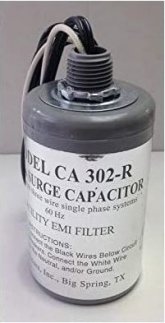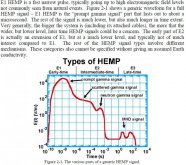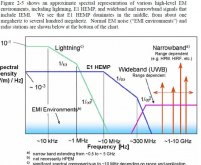Maast
Compulsive Tinkerer
After several days of digging through white papers and research articles I've concluded that the best solution is a large capacitor like a Delta CA302 surge suppressor paralleled with a TVS Diode array which is in turn paralleled with a large MOV based SPD like the Midnites or Siemens FS140.
Even though the TVS diodes and actually the MOVs do react in nanosecond time, they don't reach full conductivity quite fast enough so the capacitor (which reacts in picoseconds) is there for whats called "waveform shaping" which is basically slows down the E1 rise time to where the TVS/MOVs can begin conducting and once the E1 and E2 is done and the big-but-slow E3 surge comes in will continue to conduct enough amps to trip the main upstream breaker.
E3 is still a concern because even though the pole transformer core saturates the secondary windings are still subjected to rising voltage because the strengthening magnetic field outside of the core. Core saturation soaks up a lot of energy but it doesnt soak up all of it by any means.
So in summary:
- The capacitor handles the E1 nanosecond rise time
- The TVS diodes handles the trailing edge of the E1 and the beginning of the E2 from 10ns to about 1ms. The TVS diodes also handle the oddball transients that come through and prevent wear on the MOVs, even though the capacitor will do this too however the capacitor doesnt do any voltage clamping just amp absorbing and voltage rise slowing
- The MOVs handle the rest of the E2 amperage surge and the beginning of the huge E3 surge long enough for the:
- The main breaker disconnects the house from the body of the E3 surge.

Even though the TVS diodes and actually the MOVs do react in nanosecond time, they don't reach full conductivity quite fast enough so the capacitor (which reacts in picoseconds) is there for whats called "waveform shaping" which is basically slows down the E1 rise time to where the TVS/MOVs can begin conducting and once the E1 and E2 is done and the big-but-slow E3 surge comes in will continue to conduct enough amps to trip the main upstream breaker.
E3 is still a concern because even though the pole transformer core saturates the secondary windings are still subjected to rising voltage because the strengthening magnetic field outside of the core. Core saturation soaks up a lot of energy but it doesnt soak up all of it by any means.
So in summary:
- The capacitor handles the E1 nanosecond rise time
- The TVS diodes handles the trailing edge of the E1 and the beginning of the E2 from 10ns to about 1ms. The TVS diodes also handle the oddball transients that come through and prevent wear on the MOVs, even though the capacitor will do this too however the capacitor doesnt do any voltage clamping just amp absorbing and voltage rise slowing
- The MOVs handle the rest of the E2 amperage surge and the beginning of the huge E3 surge long enough for the:
- The main breaker disconnects the house from the body of the E3 surge.







